#ted husing
Explore tagged Tumblr posts
Text


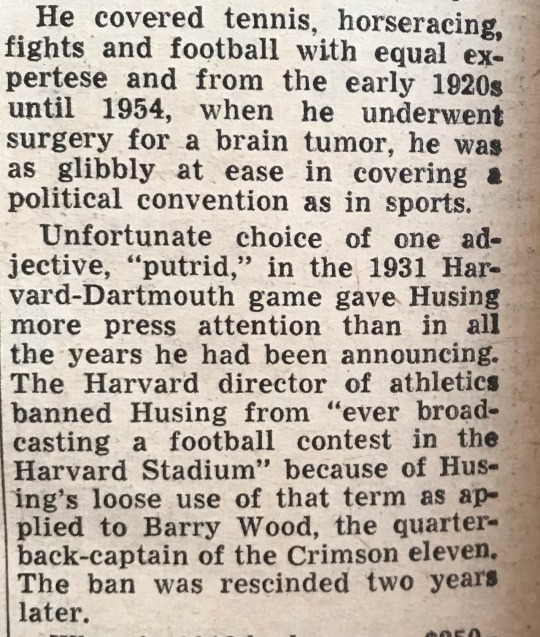







1931.
CBS sportscaster Ted Husing was embroiled in scandal because he used the word "putrid" during a broadcast.
3 notes
·
View notes
Text
Så det er "Speak your language" dag, og jeg har her en liste af danske ord som jeg savner VOLD meget når jeg taler/skriver engelsk:
"Sin/sit/sine". Pronomet over alle pronomener! Jeg talte morsingbosk som barn(vi bruger bare hans/hendes/deres som på engelsk), og da vores dansklære fortalte os hvor vigtigt det var rullede vi øjne, men hun havde ret! Det er så rart hurtigt at kunne vide hvem der gør hvad.
Alle vores ord for sygdomme, kropsdele osv. Helt ærligt hvad fuck er en "appendix"? Engelsk er så højrøvet et sprog, og det ses især i navne på kropsdele og sygdomme. Det er en blindtarm, tak. Hvad er en "molar"? Det er en tand i kinden, kald det en "kindtand" for fucks sake. Vi har heldigvis dette tilfælles med tysk(Ich mochte Deutsch in der Schule nicht, aber es ist eine schöne Sprache).
"Fællesskab(fællessang osv)". Det er så synd for de engelsksprogede at de ikke har det ord. "Community" er tæt på, men den rammer bare ikke på samme måde. Der ligger så meget i "fælles" og et eller andet gammelt ord stjålet fra græsk eller latin har bare ikke samme tyngde.
"Nå". En klassiker. Behøver jeg at forklare? Definitionen af alsidighed.
"Hos". PRÆPOSITIONEN. Jeg elsker det her satans ord SÅ HØJT! Hos kommer af "at huse", altså at rumme. Det er så fucking cute og "with" eller "by" kommer ALDRIG til at holde samme varme og kærlighed. Hver gang jeg hører til Lyse Nætter har jeg lyst til at tude over "du er hos mig", for der er ikke noget så skønt som at være "hos" nogen. At overgive sig til en andens selskab og verden. Og vi bruger det så casually! "Vi startede hos Magnus før vi tog i byen." Magnus husede os! Han rummede os alle sammen! Magnus åbnede sin verden, sit hjem, sine fucking arme til os! AAAARRRHHHHHH jeg elsker det ord!!!!
Tak for at i kom til min Ted Talk. Hos er mit yndlingsord. Dansk er et fantastisk sprog, trods dets mangler.
12 notes
·
View notes
Text
BE YOUR HUSBAND’S BEST FRIEND
December 4, 1948
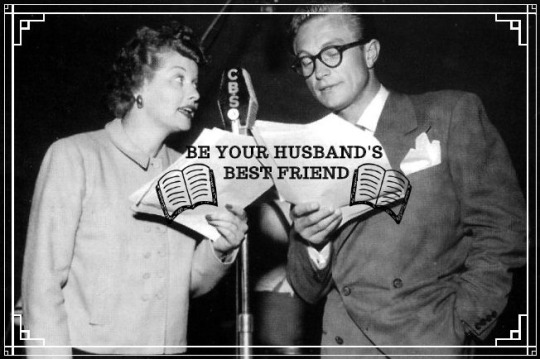
“Be Your Husband’s Best Friend” (aka “Be a Pal to Your Husband”) is episode #21 of the radio series MY FAVORITE HUSBAND broadcast on December 4, 1948.
Synopsis ~ Liz buys a book that says that the way to get along with your husband is to share all of his interests. With that in mind, she joins him in a poker game and tags along on a camping trip.
Note: This episode was aired before the characters names were changed from Cugat to Cooper. It was also before Jell-O came aboard to sponsor the show and before the regular cast featured Bea Benadaret and Gale Gordon as the Atterburys.
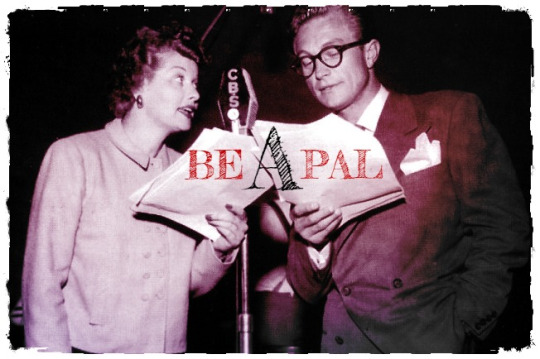
The script was also re-written as a 1950 episode of “My Favorite Husband” also titled “Be a Pal” and broadcast June 18, 1950. This was to account for the change in the characters surnames from Cugat to Cooper.
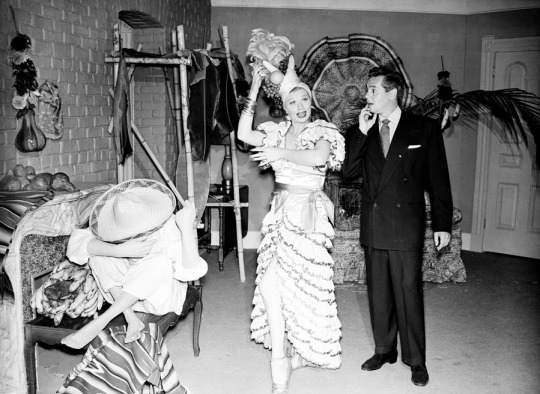
This program was also the basis for the “I Love Lucy” episode "Be a Pal" (ILL S1;E2) filmed on September 21, 1951 and first aired on October 22, 1951. The main difference is the radio versions do not include the famous Carmen Miranda lipsynch scene.
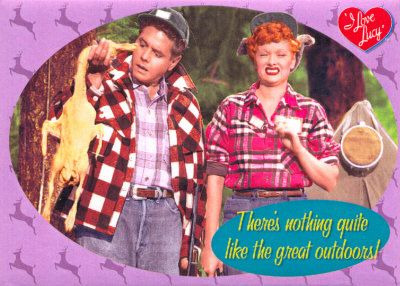
This radio version also contains story elements in its second half that were later incorporated into “The Camping Trip” (ILL S2;E29).
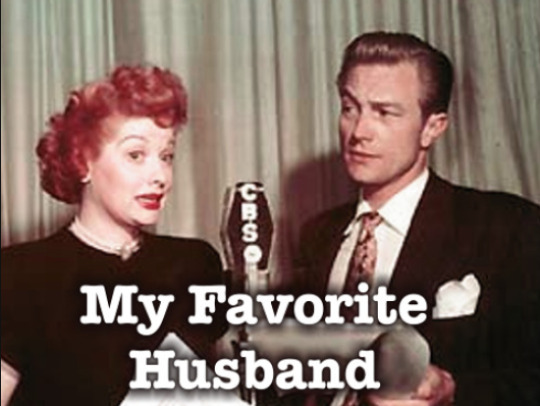
“My Favorite Husband” was based on the novels Mr. and Mrs. Cugat, the Record of a Happy Marriage (1940) and Outside Eden (1945) by Isabel Scott Rorick, which had previously been adapted into the film Are Husbands Necessary? (1942). “My Favorite Husband” was first broadcast as a one-time special on July 5, 1948. Lucille Ball and Lee Bowman played the characters of Liz and George Cugat, and a positive response to this broadcast convinced CBS to launch “My Favorite Husband” as a series. Bowman was not available Richard Denning was cast as George. On January 7, 1949, confusion with bandleader Xavier Cugat prompted a name change to Cooper. On this same episode Jell-O became its sponsor. A total of 124 episodes of the program aired from July 23, 1948 through March 31, 1951. After about ten episodes had been written, writers Fox and Davenport departed and three new writers took over – Bob Carroll, Jr., Madelyn Pugh, and head writer/producer Jess Oppenheimer. In March 1949 Gale Gordon took over the existing role of George’s boss, Rudolph Atterbury, and Bea Benaderet was added as his wife, Iris. CBS brought “My Favorite Husband” to television in 1953, starring Joan Caulfield and Barry Nelson as Liz and George Cooper. The television version ran two-and-a-half seasons, from September 1953 through December 1955, running concurrently with “I Love Lucy.” It was produced live at CBS Television City for most of its run, until switching to film for a truncated third season filmed (ironically) at Desilu and recasting Liz Cooper with Vanessa Brown.
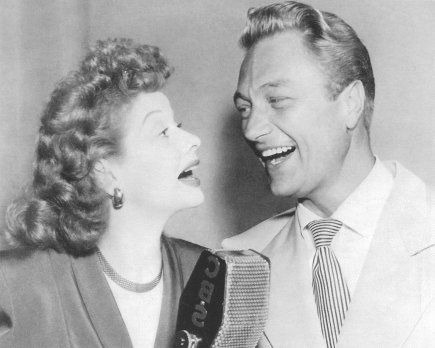
MAIN CAST
Lucille Ball (Liz Cugat) was born on August 6, 1911 in Jamestown, New York. She began her screen career in 1933 and was known in Hollywood as ‘Queen of the B’s’ due to her many appearances in ‘B’ movies. “My Favorite Husband” eventually led to the creation of “I Love Lucy,” a television situation comedy in which she co-starred with her real-life husband, Latin bandleader Desi Arnaz. The program was phenomenally successful, allowing the couple to purchase what was once RKO Studios, re-naming it Desilu. When the show ended in 1960 (in an hour-long format known as “The Lucy-Desi Comedy Hour”) so did Lucy and Desi’s marriage. In 1962, hoping to keep Desilu financially solvent, Lucy returned to the sitcom format with “The Lucy Show,” which lasted six seasons. She followed that with a similar sitcom “Here’s Lucy” co-starring with her real-life children, Lucie and Desi Jr., as well as Gale Gordon, who had joined the cast of “The Lucy Show” during season two. Before her death in 1989, Lucy made one more attempt at a sitcom with “Life With Lucy,” also with Gordon.
Richard Denning (George Cugat) was born Louis Albert Heindrich Denninger Jr., in Poughkeepsie, New York. When he was 18 months old, his family moved to Los Angeles. Plans called for him to take over his father’s garment manufacturing business, but he developed an interest in acting. Denning enlisted in the US Navy during World War II. He is best known for his roles in various science fiction and horror films of the 1950s. Although he teamed with Lucille Ball on radio in “My Favorite Husband,” the two never acted together on screen. While “I Love Lucy” was on the air, he was seen on another CBS TV series, “Mr. & Mrs. North.” From 1968 to 1980 he played the Governor on “Hawaii 5-0″, his final role. He died in 1998 at age 84.
Ruth Perrott (Katie, the Maid) was also later seen on “I Love Lucy.” She first played Mrs. Pomerantz, a member of the surprise investigating committee for the Society Matrons League in “Pioneer Women” (ILL S1;E25), as one of the member of the Wednesday Afternoon Fine Arts League in “Lucy and Ethel Buy the Same Dress” (ILL S3;E3), and also played a nurse when “Lucy Goes to the Hospital” (ILL S2;E16). She died in 1996 at the age of 96.
In this episode we learn the names of all seven of Katie’s ex-husbands: Clarence, Peter, Harold, Oscar, Engelbert, and Yancy.
Bob LeMond (Announcer) also served as the announcer for the pilot episode of “I Love Lucy”. When the long-lost pilot was finally discovered in 1990, a few moments of the opening narration were damaged and lost, so LeMond – fifty years later – recreated the narration for the CBS special and subsequent DVD release.
GUEST CAST
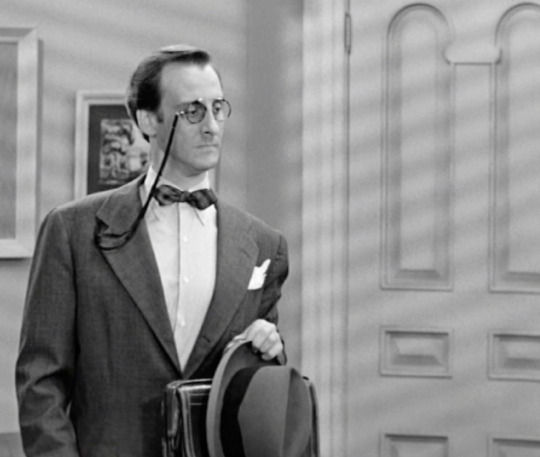
Hans Conried (Professor Philpot Millmoss) first co-starred with Lucille Ball in The Big Street (1942). He then appeared on “I Love Lucy” as used furniture man Dan Jenkins in “Redecorating” (ILL S2;E8) and later that same season as Percy Livermore in “Lucy Hires an English Tutor” (ILL S2;E13) – both in 1952. The following year he began an association with Disney by voicing Captain Hook in Peter Pan. On “The Lucy Show” he played Professor Gitterman in “Lucy’s Barbershop Quartet” (TLS S1;E19) and in “Lucy Plays Cleopatra” (TLS S2;E1). He was probably best known as Uncle Tonoose on “Make Room for Daddy” starring Danny Thomas, which was filmed on the Desilu lot. He joined Thomas on a season 6 episode of “Here’s Lucy” in 1973. He died in 1982 at age 64.
Conried will recreate this role in 1950, when the script is rewritten for the Coopers as “Be A Pal.” The only difference is that his first name is Philip, not Philpot. On television, the author remains off screen throughout.
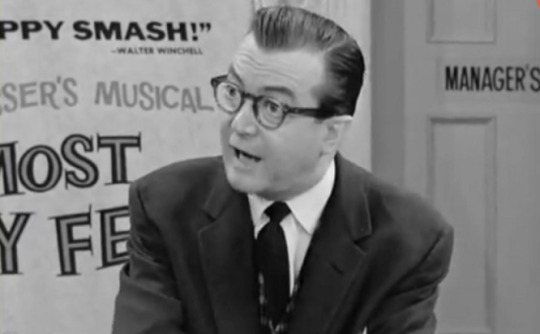
Joseph Kearns (Joe, Poker Player) appeared on “I Love Lucy” as the psychiatrist in “The Kleptomaniac” (ILL S1;E27) and later played the theatre manager in “Lucy’s Night in Town” (ILL S6;E22). His most famous role was as Mr. Wilson on TV’s “Dennis the Menace” (1959). When he passed away during the show’s final season, Lucy regular Gale Gordon took over for him, playing his brother.
In future iterations of this script, this character’s dialogue is assumed by Mr. Atterbury (Gale Gordon) and on TV by Fred Mertz (William Frawley).
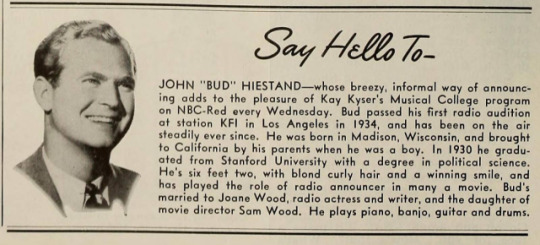
John Hiestand (Cory Cartwright) served as the announcer for the radio show “Let George Do It” from 1946 to 1950. In 1955 he did an episode of “Our Miss Brooks” opposite Gale Gordon. Cory was a regular character who was eventually written out of the series when the Atterbury’s (Gale Gordon and Bea Bendaret) were introduced.
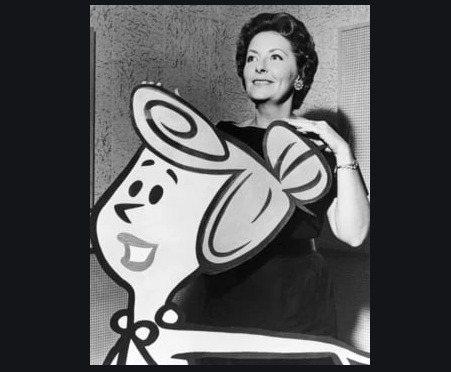
Jean Vander Pyl (Marge) is best known as the voice of Wilma Flintstone for the Hanna-Barbera cartoon “The Flintstones.” Coincidentally, Wilma’s best friend was voiced by Bea Benadaret, who will later play Iris Atterbury, Liz’s best friend on “My Favorite Husband.” On radio she was heard on such programs as “The Halls of Ivy” (1950–52) and on “Father Knows Best” before it moved to TV. She died in 1999 at age 79.
THE EPISODE
ANNOUNCER: “Let’s look in on the Cugats and see what they’re doing. Oh, but hold your hats. Liz and George are having an argument about their plans for their evening. Liz wants to go to a symphony concert and George wants to have a poker game! (As a fight announcer) And in this corner wearing a pink satin housecoat and weighing 120 pounds, ‘Battling Liz Cugat.’ And in this corner wearing a grey pinstripe suit and weighing 170 pounds is her husband ‘Gorgeous George’. Well, the first round ended in a draw and here comes the second round!”
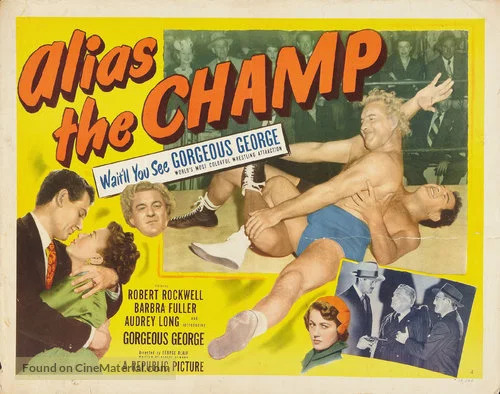
‘Gorgeous George’ was the stage name of professional wrestler George Raymond Wagner (1915–63), so named because of his long, blonde hair. He was mentioned on “I Love Lucy” in “Pioneer Women” (ILL S1;E25) and “Ricky’s Movie Offer” (ILL S4;E6).
Liz and George lament that they argue so much since getting married. George wonders why men have to wear formal clothes to a concert.
LIZ: “Because when they fall asleep the stiff shirt keeps them from falling over.”
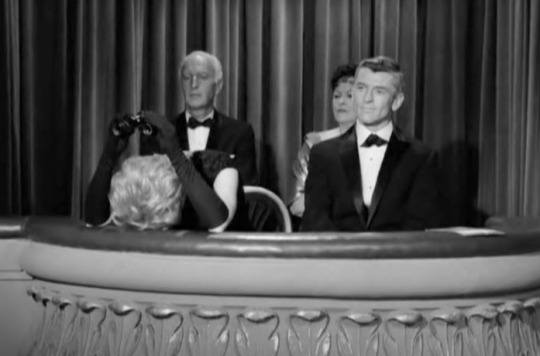
In “Lucy the Music Lover” (TLS S1;E8) it was Lucy Carmichael, not her tuxedo-clad date, that fell asleep during a classical music concert. At least she didn’t drop her opera glasses!
Liz turns on the waterworks, but George still refuses to go to the concert.
GEORGE: “And I hope Leopold falls flat on his Stokowski!”
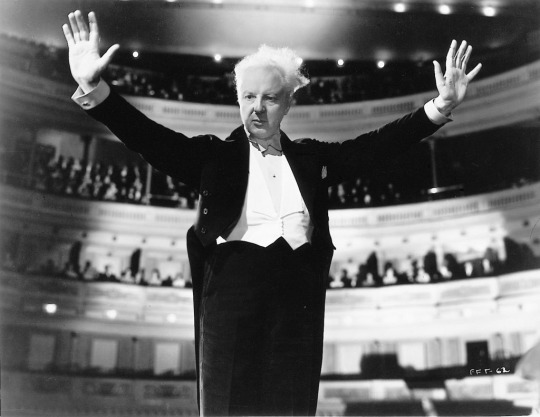
Leopold Stokowski (1882-1977) was one of the leading conductors of the early and mid-20th century, he is best known for his long association with the Philadelphia Orchestra and his appearance in Disney’s Fantasia (1940) with that orchestra.
Liz tells Katie the Maid she will be going to a woman’s club luncheon to hear a talk about marriage. Katie tells her that she has been married six times: Peter, Harold, Oscar, Engelbert, and Yancy, which she remembers because it spells out ‘P.H.O.E.Y’. She’s intentionally left off her first husband Clarence because it wouldn’t spell ‘phoey’!
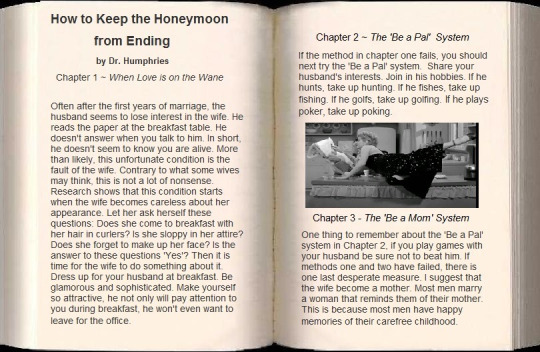
At their club luncheon, Liz and Marge (Jean Vander Pyl) listen to a guest speaker talk about “How To Be Happy, Though Married”. Professor Philpot Millmoss (Hans Conried) suggests the ladies be a pal to their husbands. Liz wonders why it has to be the woman who gives in - but Millmoss tells her to consult his new book on sale at the door for seventy nine cents.
Note: In the 1950 revision, Marge was replaced with Iris (Bea Benadaret), but the author was still played by Hans Conried. In the television version, the author remains off screen and Ethel Mertz (Vivian Vance) takes the Marge / Iris lines.
Liz resolves to employ the “Be A Pal Treatment” with George and sits beside him to read the evening newspaper. Liz pretends to be interested in the sports section.
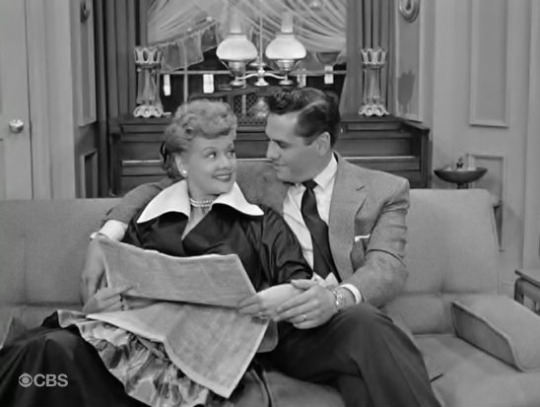
LIZ (reading): “Williams Bags Crown By TKO in eighth.″
Liz pronounces TKO phonetically as ‘Tuh-Ko” although George corrects her. The exchange was repeated verbatim between Lucy and Ricky in “The Camping Trip.”
LIZ (reading): “Midget Racing! They oughta be ashamed making those little men run around the track.”
George sarcastically calls Liz Ted Husing, and then Red Barbar.
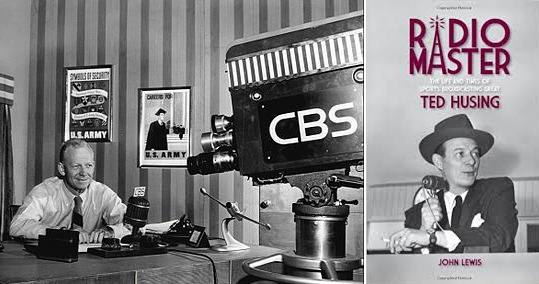
Ted Husing (1901-62) was one of CBS Radio’s most popular sportscasters. By 1950 his salary was an astronomical million dollars! Red Barber (1908-92) was a play-by-play announcer for major league baseball, then announcing for the Brooklyn Dodgers and holding down his own CBS TV sports show “Red Barber’s Club House.”
LIZ (reading): “They’re racing little girls! It says so right here,‘Yesterday at Tanforan a race was won by a three year-old maiden!’ She certainly was carrying a lot of money for a little girl. She had $2,000 in her purse.”
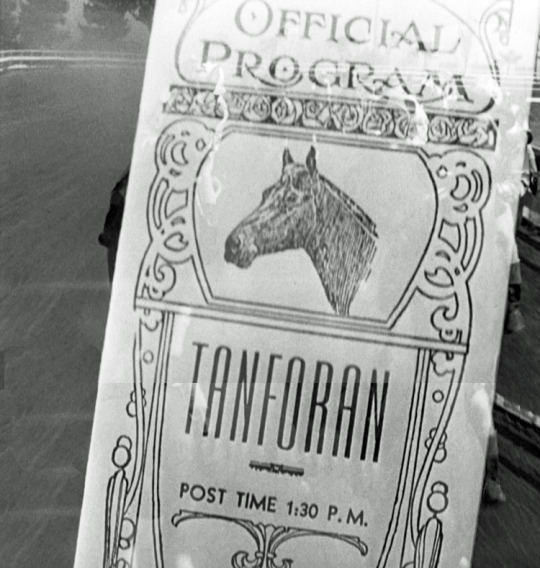
The line is virtually identical on television, except that Tanforan (a horse racetrack outside San Francisco) was changed to the more familiar Churchill Downs.
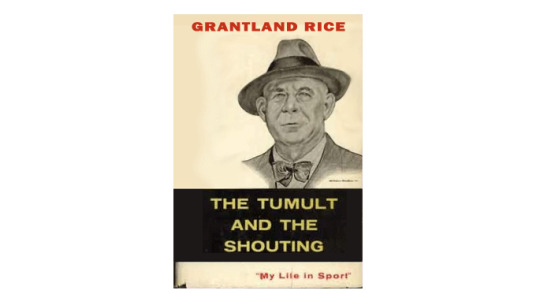
George / Ricky then refers to Liz / Lucy as Grantland Rice (1880–1954), a sportswriter known for his elegant prose, although the reference was removed for TV syndication when Rice died in 1954. It was restored for the DVD release. Clueless Liz / Lucy think he is a food!
Liz is determined to join in the poker game that evening, despite not knowing anything about the card game. Lucy also tried this tactic in the television version of “Be A Pal”. The other poker players are Joe (Joseph Kearns) and Cory Cartwright (John Hiestand), George’s bachelor friend.
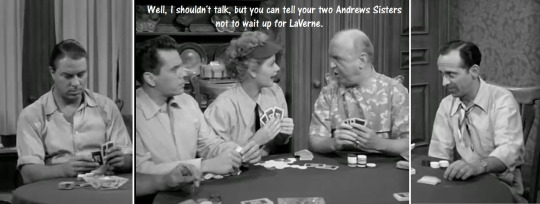
In the 1950 radio re-write, Joe was voiced by Hans Conried (doubling with Millmoss) and Gale Gordon as Mr. Atterbury, a role previously played in earlier episodes by Hans Conried. On television, the poker players were Fred Mertz (William Frawley), Hank (Richard Reeves, left) and Charlie (Tony Michaels, right).
LIZ CUGAT / LIZ COOPER / LUCY RICARDO (looking over her cards): “There’s her sister! What do you have?”
JOE / MR. ATTERBURY / FRED: “I shouldn’t talk, but tell your two Andrews Sisters not to wait up for LaVerne!”
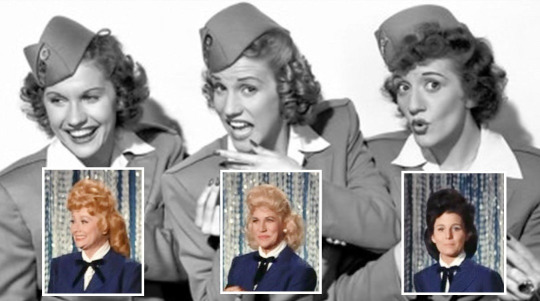
The Andrews Sisters were a close-harmony singing group most popular during World War II. In 1969 Lucy played LaVerne Andrews on an episode of “Here’s Lucy” that guest-starred Patty Andrews as herself. Lucie Arnaz took the role of the third Andrews sister, Maxene.
A few days later, George confides in Cory that Liz has been driving him crazy by sticking to his side like glue, trying to be interested in everything that he is. George decides to go away on a camping trip to get away from her for a while. Cory suggests that George take Liz with him and make the trip so rigorous that she will regret trying to ‘be a pal’.
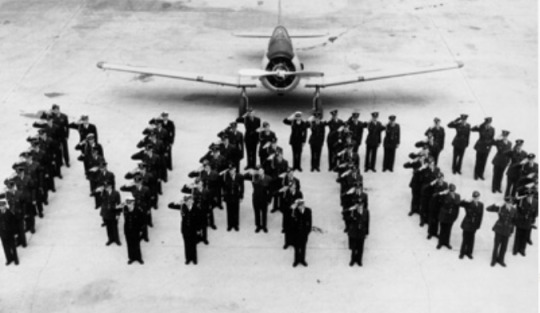
At the end of Act One, there is a public service announcement about NATO - the newly-formed North Atlantic Treaty Organization.
Katie warns Liz about her husband’s plan, having overheard George and Cory talking. Liz spills the beans to Cory and blackmails him to turn the tables on George at the campsite.
Liz and George engage in a fishing contest, just like Lucy and Ricky in “The Camping Trip”. When Liz pretends to know all about fishing, George calls her sarcastically dubs her Izaak Walton.
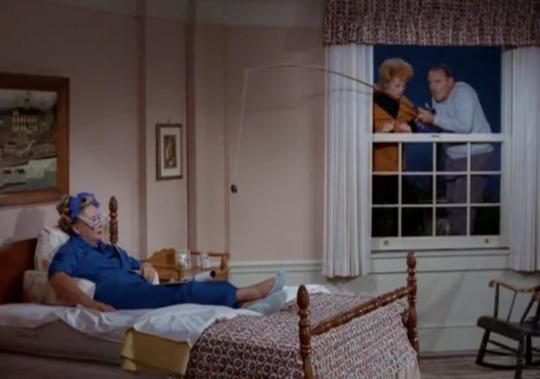
Izaak Walton (1594-1683) was an English writer known for The Compleat Angler (1653), a famous prose and poetry celebration of fishing. His name was mentioned by Mr. Mooney before ‘fishing’ for Viv’s glasses in “The Loophole in the Lease” (TLS S2;E12) in 1963.
Once George is out of sight, Cory arrives with some store-bought fish to fool George.
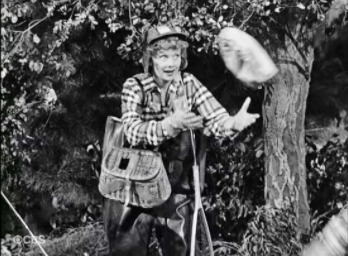
LIZ: “Throw them to me, Cory. That way I can tell George I caught 'em.”
George and Liz decide to bet on who can hike back to the campsite fastest. Luckily, Liz has Cory waiting in a car to assure that she wins!
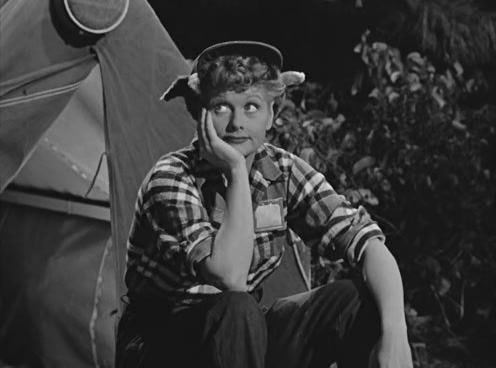
Back at camp, Liz is patiently waiting for George, who trudges in weary and parched. Liz confesses that she got back so early she had time to wash her hair so there is no water.
Next morning Liz and Cory conspire to make George think she’s an expert duck hunter and sharp-shooter! Liz takes aim at the tree, and on cue Cory tosses a duck at her feet.
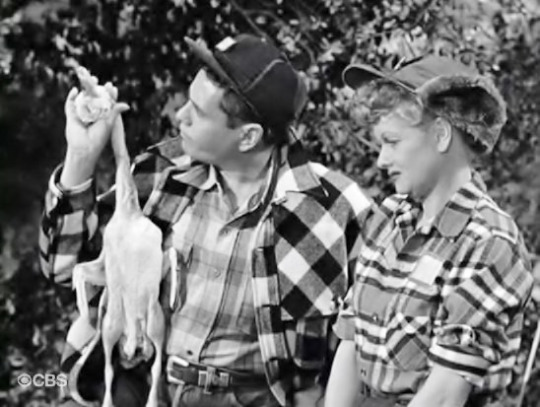
GEORGE: “I don’t get it. Liz. First you catch a Lake Trout in a stream, now you shoot a duck marked Birds Eye Frozen Foods!”
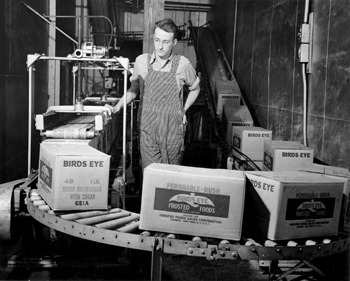
In the early 1900s, Clarence Frank Birdseye II of Montclair, New Jersey, received patents for the development of improved methods to freeze fish for commercial production. In 1922, he formed a company, Birdseye Seafood, Inc., Birdseye created a new company, General Seafood Corporation, to promote this method. In 1929, Birdseye sold his company and patents for $22 million to General Foods Corporation which founded the Birds Eye Frozen Food Company. Although primarily marketing frozen vegetables, they have occasionally sold other foods as well.
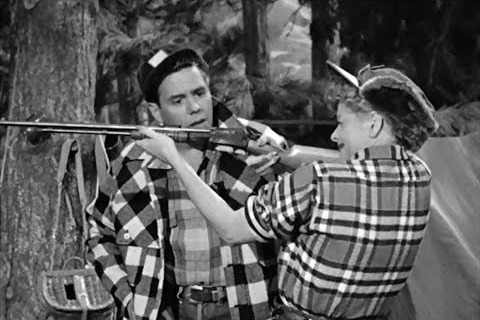
A target practice ensues where a discretely hidden away Cory clangs an anvil every time Liz shoots at a distant horseshoe. A suspicious George gets wise to Cory and Liz’s scheme and trains his rifle on on the tree. A frightened Cory comes down but all ends happily.

LIZ (to George): “Let’s not be pals or companions. Let’s not be even be friends anymore. Let’s just go back to being man and wife.”
In the bedtime tag, Liz tries to wake a sleeping George. She sees a note pinned to his chest that says:
DEAR PAL. YES, I AM ASLEEP. I TOOK A SLEEPING PILL TO MAKE SURE OF IT. GOOD NIGHT.
LIZ: “Aww...isn’t he cute? Goodnight, George.”
#My Favorite Husband#Be A Pal#The Camping Trip#I Love Lucy#Richard Denning#Lucille Ball#Hans Conried#Jean Vander Pyl#Birdseye#Duck Hunting#Izaak Walton#NATO#Clarence Birdseye#Birds Eye Frozen Foods#Grantland Rice#The Andrews Sisters#Red Barber#Ted Husing#Tanforan#Leopold Stokowski#Radio#1948#John Hiestand#Gorgeous George#Ruth Perrott#Bob LeMond#CBS Radio#Desi Arnaz#Joseph Kearns#Richard Reeves
0 notes
Note
Is it me or is that smile on the Ness look-alike oddly familiar?

109 notes
·
View notes
Text
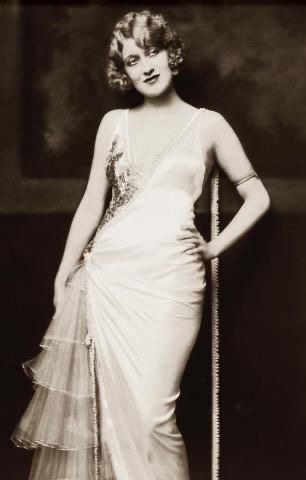
Ruth Etting (November 23, 1896 – September 24, 1978) was an American singing star, vaudevillian and actress of the 1920s and 1930s, who had over 60 hit recordings and worked in stage, radio, and film. Known as "America's sweetheart of song", her signature tunes were "Shine On, Harvest Moon", "Ten Cents a Dance" and "Love Me or Leave Me".
Her other popular recordings included "Button Up Your Overcoat", "Mean to Me", "Exactly Like You" and "Shaking the Blues Away".
As a young girl in Nebraska, Etting had wanted to be an artist; she drew and sketched everywhere she was able. At sixteen, her grandparents decided to send her to art school in Chicago. While Etting attended class, she found a job at the Marigold Gardens nightclub; after a short time there, Etting gave up art classes in favor of a career in show business. Etting, who enjoyed singing in school and church, never took voice lessons. She quickly became a featured vocalist at the club. Etting was then managed by Moe Snyder, whom she married in 1922. Snyder made arrangements for Etting's recording and film contracts as well as her personal and radio appearances. She became nationally known when she appeared in Flo Ziegfeld's Follies of 1927.
Etting intended to retire from performing in 1935, but this did not happen until after her divorce from Snyder in 1937. Harry Myrl Alderman, Etting's pianist, was separated from his wife when he and Etting began a relationship. Snyder did not like seeing his former wife in the company of other men and began making telephone threats to Etting in January 1938. By October, Snyder traveled to Los Angeles and detained Alderman after he left a local radio station; he forced the pianist to take him to the home of his ex-wife at gunpoint. Saying he intended to kill Etting, Alderman, and his own daughter, Edith, who worked for Etting, Snyder shot Alderman. Three days after Alderman was shot, his wife filed suit against Etting for alienation of affections.
While Alderman and Etting claimed to have been married in Mexico in July 1938, Alderman's divorce would not be final until December of that year. The couple was married during Moe Snyder's trial for attempted murder in December 1938. Etting and Alderman relocated to a farm outside of Colorado Springs, Colorado, where they were primarily out of the spotlight for most of their lives. Her fictionalized story was told in the 1955 musical film Love Me Or Leave Me with Doris Day as Ruth Etting and James Cagney as Snyder.
Etting was born on November 23, 1896, in David City, Nebraska, to Alfred Etting, a banker, and Winifred (Kleinhan). Her mother died when she was five years old and she then went to live with her paternal grandparents, George and Hannah Etting. Her father remarried and moved away from David City and was no longer a part of his daughter's life. Etting's grandfather, George, owned the Etting Roller Mills; to the delight of his granddaughter, George Etting allowed traveling circuses and shows to use the lot behind the mills for performances.
Etting was interested in drawing at an early age; she drew and sketched anywhere she was able. Her grandparents were asked to buy the textbooks she had used at the end of a school term because Etting had filled them with her drawings. She left David City at the age of sixteen to attend art school in Chicago. Etting got a job designing costumes at the Marigold Gardens nightclub, which led to employment singing and dancing in the chorus there. She gave up art school soon after going to work at Marigold Gardens. Before turning exclusively to performing, Etting worked as a designer for the owner of a costume shop in Chicago's Loop; she was successful enough to earn a partnership in the shop through her work.
While she enjoyed singing at school and in church, Etting never took voice lessons. She said that she had patterned her song styling after Marion Harris, but created her own unique style by alternating tempos and by varying some notes and phrases. Describing herself as a "high, squeaky soprano" during her days in David City, Etting developed a lower range singing voice after her arrival in Chicago which led to her success. Her big moment came when a featured vocalist suddenly became ill and was unable to perform. With no other replacement available, Etting was asked to fill in. She quickly changed into the costume and scanned the music arrangements; the performer was male, so Etting tried to adjust by singing in a lower register. She became a featured vocalist at the nightclub.
Etting described herself as a young, naive girl when she arrived in Chicago. Due to her inexperience in the ways of the big city, she became reliant on Snyder after their meeting. Etting met gangster Martin "Moe the Gimp" Snyder in 1922, when she was performing at the Marigold Gardens. Snyder, who divorced his first wife to marry Etting, was well-acquainted with Chicago's nightclubs and the entertainers who worked in them; he once served as a bodyguard to Al Jolson. Snyder also used his political connections to get bookings for Etting, who was called "Miss City Hall" because of Snyder's influence in Chicago. Etting married Snyder on July 17, 1922 in Crown Point, Indiana. She later said she married him "nine-tenths out of fear and one-tenth out of pity." Etting later told her friends, "If I leave him, he'll kill me." He managed her career, booking radio appearances and eventually had her signed to an exclusive recording contract with Columbia Records.
The couple moved to New York in 1927, where Etting made her Broadway debut in the Ziegfeld Follies of 1927. Irving Berlin had recommended her to showman Florenz Ziegfeld. Etting nervously prepared to sing for Ziegfeld at the audition. However, he did not ask her to sing at all; only to walk up and down the room. She was hired on that basis because Ziegfeld did not hire women with big ankles. While the original plan for the show was for Etting to do a tap dance after singing "Shaking the Blues Away", she later remembered she was not a very good dancer. At the show's final rehearsal, Flo Ziegfeld told her, "Ruth, when you get through singing, just walk off the stage". Etting also appeared in Ziegfeld's last "Follies" in 1931.
She went on to appear in a number of other hit shows in rapid succession, including Ziegfeld's Simple Simon and Whoopee!. Etting was not originally signed to perform in Simple Simon; she became part of the cast at the last minute when vocalist Lee Morse was too intoxicated to perform. Ziegfeld asked Etting to replace Morse; she hurried to Boston, where the show was being tried out prior to Broadway. When Etting arrived, songwriters Rodgers and Hart discovered that the song "Ten Cents a Dance" was not written for Etting's voice range. The three spent the night rewriting the song so Etting could perform it.
Toward the end of Simple Simon's Broadway run, Etting persuaded Ziegfeld to add "Love Me Or Leave Me" to the show though the song was originally written for Whoopee!. She had recorded the song in 1928, but Etting's new version of it was impressive enough to earn her a Vitaphone contract to make film shorts.
In Hollywood, Etting made a long series of movie shorts between 1929 and 1936, and three feature movies in 1933 and 1934. She described the short films as either having a simple plot to allow for her to sing two songs or with no plot at all. The idea was to have Etting sing at least two songs in the film. While she received a marquee billing for Roman Scandals, Etting had only two lines in the film and sang just one song. Etting believed she might have had more success in full-length films if she had been given some acting lessons. Her perception was that the studios viewed her only as a vocalist. She later recalled, "I was no actress, and I knew it. But I could sell a song". In 1936, she appeared in London in Ray Henderson's Transatlantic Rhythm. Etting quit the show because she and the other performers had not been paid.
Etting was first heard on radio station WLS when she was living in Chicago. Her appearance drew so much fan mail the station signed her to a year's contract for twice weekly performances. She had her own twice weekly 15 minute radio show on CBS in the 1930s. By 1934, she was on NBC with sports announcer Ted Husing doing the announcing and Oldsmobile sponsoring her program.
After an unissued test made by Victor on April 4, 1924, Etting was signed to Columbia Records in February 1926. She remained at Columbia through June 1931, when she split her recording between ARC (Banner, Perfect, Romeo, Oriole, etc.) and Columbia through March 1933. She signed with Brunswick and remained there until May 1934, when she re-signed with Columbia through July 1935. After a solitary Brunswick session in March 1936, she signed with the British label Rex and recorded two sessions in August and September, 1936. Etting returned to the US and signed with Decca in December 1936 and recorded until April 1937, when she basically retired from recording.
Etting saved some of her paycheck each week, regardless of the amount she was making at the time. Her friends said she invested in California real estate rather than the stock market. Etting, who made many of her own clothes, did her own housekeeping and lived frugally, initially announced her retirement in 1935. It is not clear why she did not go through with her announced plans, but she issued a second statement regarding retirement after filing for divorce from Snyder in November 1937.
Snyder's aggressive and controlling management style began to cause problems for Etting; during her work with Whoopee! on Broadway, Snyder was a constant presence. He was never without a gun and enjoyed poking people with it while saying "Put your hands up!" then laughing when their fright was evident. Snyder also persisted in cornering Ziegfeld because he believed Etting's role in the musical could be improved. Ziegfeld had a different opinion and indicated nothing would be changed. Snyder would then mumble that it was not a suggestion but a demand.
By 1934 she was having difficulty getting engagements. Snyder's arguing and fighting at venues where Etting was employed caused her to be passed by for jobs in the United States. In 1936, she thought taking work in England might be the answer, but Snyder created problems while she was working there also. Soon after the couple arrived in England, Snyder became involved in a street fight which created adverse publicity for Etting. She divorced Moe Snyder on the grounds of cruelty and abandonment on November 30, 1937. Snyder did not contest the divorce and received a settlement from his former wife. Etting gave her ex-husband half of her earnings at the time, $50,000, some securities and a half interest in a home in Beverly Hills, California. She deducted the gambling debts of Snyder she had paid and the costs she had paid for a home for Snyder's mother.
Etting fell in love with her pianist, Myrl Alderman, who was separated from his wife. In January 1938, she began receiving threatening telephone calls from Snyder, who initially claimed Etting withheld assets from him when the divorce settlement was made. Though the couple was divorced, Snyder was also upset because of reports that she was seeing another man. Snyder told Etting that he would come to California and kill her. When Snyder telephoned and found Etting unavailable, he told his daughter Edith that he "would fix her ticket, too". He called again that evening; this time Etting took the call with her cousin, Arthur Etting, listening on an extension. Etting requested police protection after the telephone call and arranged for private protection. Apparently believing the danger was over when Snyder did not appear soon after his telephone call, Etting released her bodyguards a few days later.
On October 15, 1938, Snyder detained Myrl Alderman at a local radio station and forced the pianist to take him to his former wife at gunpoint. In the house at the time were Etting and Edith Snyder. Edith, Snyder's daughter by a previous marriage, worked for Etting and remained living with her after the divorce. Snyder held Etting and Alderman at gunpoint; when told his daughter was in another part of the house, he made Etting call her into the room. Snyder said he intended to kill all three, and told them to be quiet. When Myrl Alderman attempted to speak, Snyder shot him. Snyder then told his ex-wife, "I've had my revenge, so you can call the police."
Snyder claimed Myrl Alderman pulled a gun and shot at him first and that his ex-wife would not file charges against him because she still loved him. He also claimed he was drunk when he made the telephone threats to Etting in January 1938, saying that at the time his intentions were to kill both his ex-wife and himself. Ruth Etting said that the only gun in the home belonged to her, and after the shooting of Alderman, she was able to go into her bedroom and get it. Upon seeing Etting's gun, Moe Snyder wrested it away from her; it landed on the floor. Snyder's daughter, Edith, picked it up and held it on her father, shooting at him but hitting the floor instead. During a police reenactment of the shooting three days later, Edith Snyder said that she fired at her father to save Ruth Etting, weeping as she continued, "I don't yet know whether I am sorry I missed my Dad or whether I am glad". Snyder was accused of attempting to murder his ex-wife, his daughter, and Etting's accompanist, Myrl Alderman, the kidnapping of Alderman, as well as California state gun law violations.
Three days after the shooting of Myrl Alderman, the pianist's second wife, Alma, sued Etting for alienation of her husband's affections. Though Etting and Alderman claimed to have been married in Tijuana, Mexico in July 1938, Alma Alderman said any marriage was invalid, because her divorce from Myrl Alderman would not be final until December 1938. Police investigators could find no record of the couple's Mexican marriage. Etting publicly invited Alma Alderman to visit her husband in the hospital, in an effort to see if the couple could reconcile.
Ruth Etting testified that she was not married to Alderman. During the course of the trial, there was also a question of the validity of Alderman's marriage to Alma. Alderman's first wife, Helen, obtained an interlocutory decree on January 7, 1935; the divorce became final one year later. On January 9, 1935, Alderman married Alma in Mexico. The second Mrs. Alderman called Moe Snyder to the stand as a witness regarding an attraction between her husband and Etting. Helen Alderman Warne also appeared in court, claiming that Alma Alderman had spirited Myrl away from her. Warne added that she had married and divorced the pianist twice. Alma Alderman's lawsuit ended in December 1939, with the court finding that she was not entitled to damages from Ruth Etting.
The testimony in both trials brought much personal information into the public eye. Snyder, who claimed to still be in love with his ex-wife, gave Etting a diamond and platinum bracelet which she accepted after Snyder's telephone threat in January 1938. Etting testified that she agreed with her ex-husband's statement to police that Snyder was either drunk or out of his mind when he threatened her by phone. Snyder's attorney initially tried to prevent Etting from testifying against Snyder with a charge that the divorce she obtained in Illinois was invalid because she was a resident of California at that time.
During the trial, Snyder's attorney portrayed Ruth Etting as a calculating woman who had married Moe Snyder strictly for the benefit of her career, and that she divorced him in favor of being with another, younger man (Alderman). Snyder's attorney echoed his client's claim of self-defense and said his client never intended to kill Etting, his daughter, and Myrl Alderman. The attorney further claimed that if Snyder intended to kill the pianist, he had ample time to do so while he held a gun on Alderman during the drive from the radio station to the home where the shooting took place.
Etting married Alderman, who was almost a decade her junior, on December 14, 1938 in Las Vegas, during Moe Snyder's trial for attempted murder. Snyder was convicted of attempted murder, but released on appeal after one year in jail. Snyder won a new trial but returned to jail in January 1940 in lieu of bail. In August 1940, Myrl Alderman asked the district attorney to drop further prosecution attempts against Snyder for the 1938 shooting.
Etting, who had retired from performing prior to the shooting and subsequent trials, briefly had a radio show on WHN in 1947. She also accepted an engagement at New York's Copacabana in March 1947. Etting traveled alone to New York and during a newspaper interview, was asked if she had ever seen Moe Snyder again. She replied, "No, I hope I never do." and said that her husband never went to bed without a gun.
The couple relocated to an eight-acre farm outside of Colorado Springs in 1938. Alderman, who was raised in Colorado Springs, operated a restaurant there for a time. Etting and Alderman remained married until his death in Denver on November 28, 1966; he was buried in Evergreen Cemetery, Colorado Springs. Etting died in Colorado Springs in 1978, aged 81. She was survived by a stepson, John Alderman, and four grandchildren. Alderman and Etting are now interred at the Shrine of Remembrance Mausoleum in Colorado Springs, Colorado.
Her life was the basis for the fictionalized 1955 film, Love Me or Leave Me, which starred Doris Day (as Etting), James Cagney (as Snyder) and Cameron Mitchell (as Alderman). Etting, Myrl Alderman and Moe Snyder all sold their rights to the story to MGM; Snyder was living in Chicago in 1955. Etting expressed sadness that "the real highlight of my life", her marriage to Alderman, was omitted from the film. Shortly before her death, Etting said she thought the screen portrayal of her was too tough and that Jane Powell would have been a better choice for the lead.
Etting has a star on the Hollywood Walk of Fame for her work in films, located on the north side of the 6500 block of Hollywood Boulevard. Her recordings of Love Me Or Leave Me (2005) and Ten Cents a Dance (1999) are part of the Grammy Hall of Fame.
#ruth etting#classic hollywood#classic stars#golden age of hollywood#singer#1920s hollywood#1930s hollywood
11 notes
·
View notes
Photo



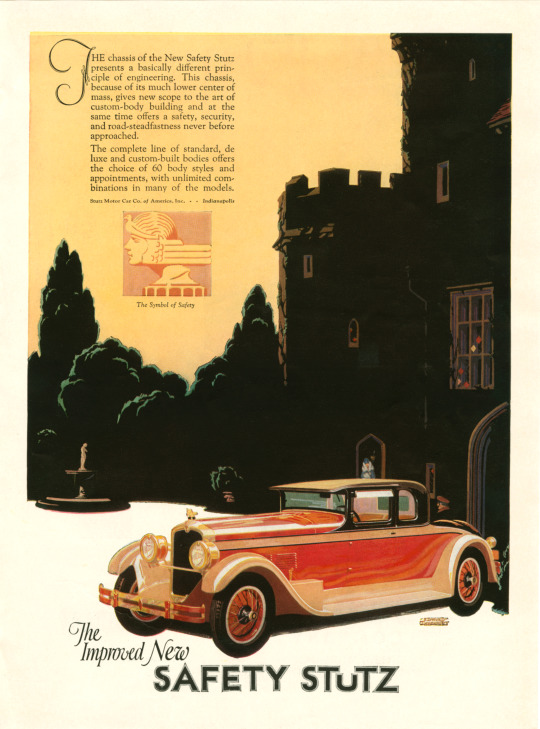
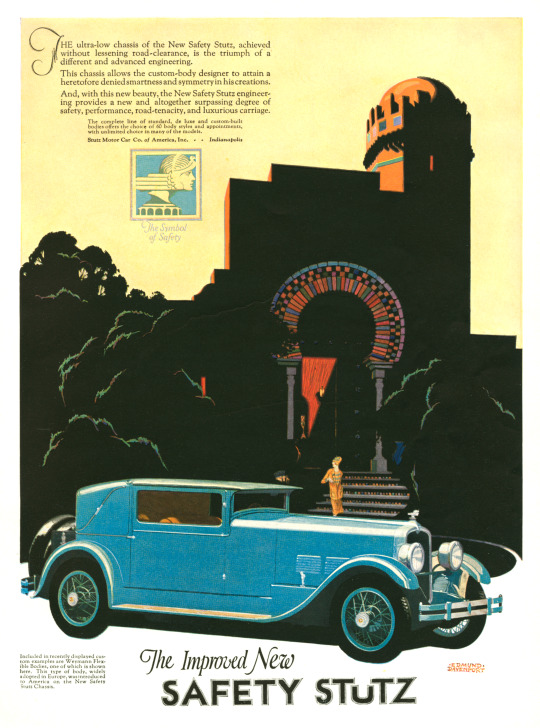
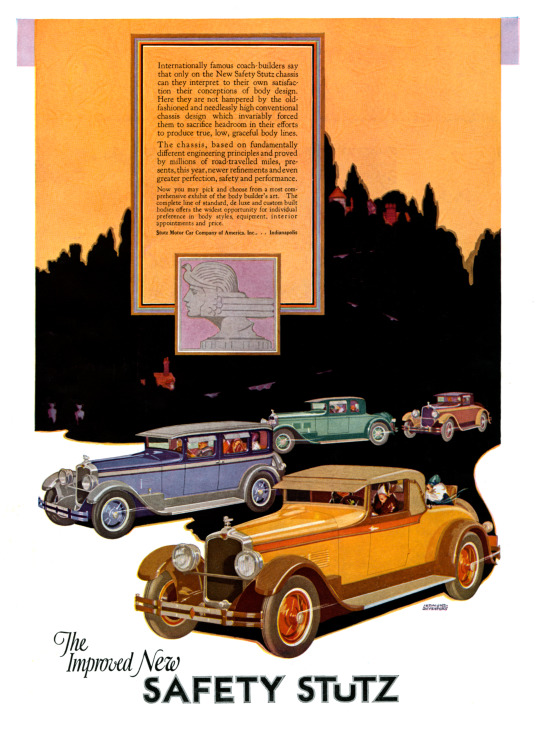
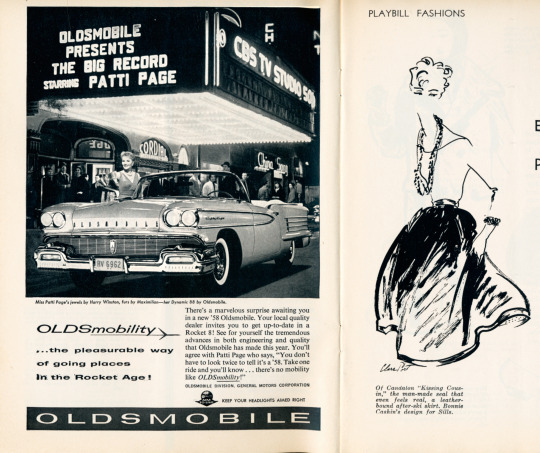
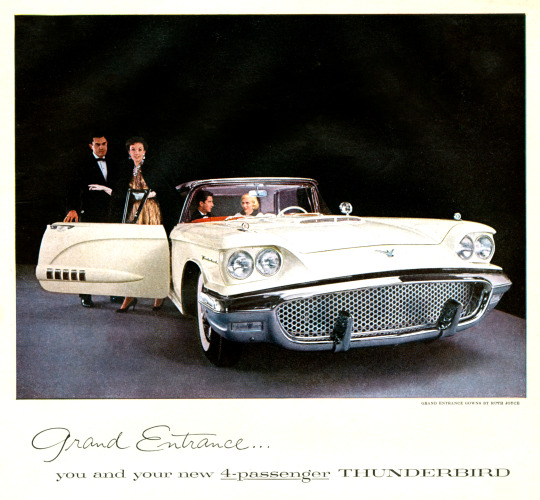

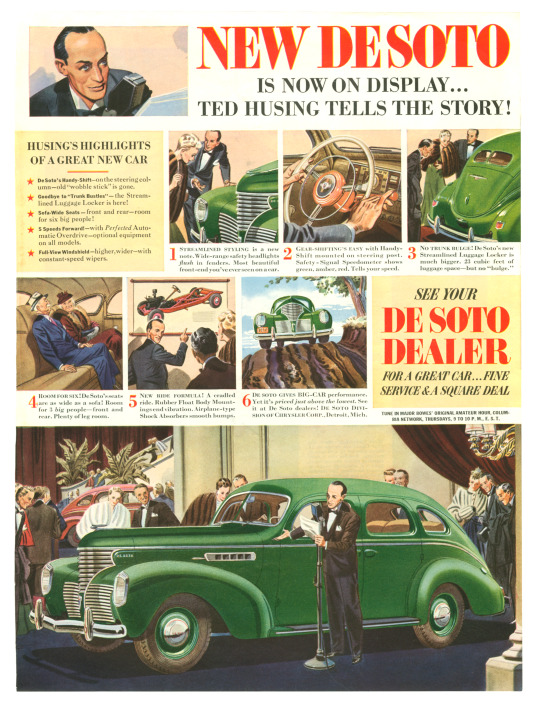
Vintage Car Ads 34
studebaker-1951 studebaker-1956 studebakers-erskine-six-1927 stutz-1927 stutz-1927 stutz-1927 take-this-simple-test t-bird-1958 t-birds-1956 ted-husing--for-desoto-1938
5 notes
·
View notes
Photo

Remembering sports announcing pioneer Ted Husing on the anniversary of his birth.
0 notes
Text
New Post has been published on OmCik
New Post has been published on http://omcik.com/ryan-plans-tweaks-to-health-care-bill-to-help-older-people/
Ryan plans tweaks to health care bill to help older people
Sen. Susan Collins, R-Maine, shown above, is one of the lawmakers talking about the possible effects of AHCA on older working-age adults. (Photo: Collins)
(Bloomberg) — House Speaker Paul Ryan said he would “most likely” bring a health care bill forward for a floor vote on Thursday, even as he seeks to increase tax credits to help older people buy insurance to tamp down concerns about moderate Republicans.
“We believe that we do need to add some additional assistance to people in those older cohorts,” Ryan said of the bill, known as the American Health Care Act, on “Fox News Sunday.” “That’s one of the things we’re looking at.”
Ryan defined the group as people in their 50s and 60s who typically face higher health care costs than those in their 20s or 30s. A Congressional Budget Office review of the bill released on March 13 suggested there would be increases in out-of-pocket costs, especially for older people.
Related: Ryan clings to core of GOP health bill as opposition mounts
The nonpartisan CBO estimated that 14 million Americans could lose their insurance next year under the Republican’s Affordable Care Act overhaul plan, a dire picture of the bill’s effects that could hurt the party heading into the 2018 congressional elections.
At the same time, insurance premiums will continue to rise in the near term, especially for older Americans. As the bill now stands, older, poorer Americans will have far less help from Republican tax credits starting in 2020 than they get through ACA advance premium tax credit subsidies.
‘Older, rural americans’
“We have to do something about the fact that the House bill disproportionately affects older, rural Americans,” Republican Sen. Susan Collins of Maine said on NBC’s “Meet the Press” on Sunday.
Collins is one of the potential swing voters in the Senate that AHCA backers need to get the measure through theSenate.
Ryan didn’t say whether he had the 218 votes necessary to pass the bill, which would replace the ACA, but he said he feels “very good about where we are.”
“We’re still having conversations with our members,” Ryan said. “We’re making fine-tuning improvements to the bill to reflect people’s concerns.”
Asked on Fox News Channel’s “Sunday Morning Futures” whether the bill would pass the House on Thursday, Republican Rep. Cathy McMorris Rodgers of Washington said, “We’re definitely moving in the right direction” and “I am confident we will come together.”
Trump told reporters aboard Air Force One on Sunday that efforts to sell the bill are “going well, had a lot of meetings on that.” Trump met with Vice President Mike Pence and senior staff this weekend, and chief strategist Steve Bannon conferred with Republican senators Ted Cruz of Texas and Mike Lee of Utah, as well as Republican Rep. Mark Meadows of North Carolina, chairman of the House Freedom Caucus, according to a White House aide.
Ryan said that proposed changes to the health care system that would occur outside of the bill also would lower payments. Health and Human Services Secretary Tom Price also said regulatory changes in particular could increase competition in markets.
“We’ve had insurers tell us not only will we stay in the market, we’ll get back in the market,” Price said Sunday on ABC’s “This Week.”
Sen. Tom Cotton of Arkansas, a Republican critic of the bill who’s said voting for the measure as written may imperil the party’s majority in the Huse in the 2018 midterm elections, said he didn’t believe the bill would lower premiums for working people.
“It’s fixable, but it’s going to take a lot of work,” Cotton said on CNN’s “State of the Union.” “We need to roll up our sleeves and focus on fixing those problems, rather than trying to rush to some arbitrary deadline.”
Red areas
House Democratic Leader Nancy Pelosi said the ACA can be improved and Republicans could work with Democrats to do that. Instead, she said, the bill championed by Republicans would hurt “millions of people who are benefiting” from the current law who voted for Trump, and hand tax breaks to wealthy people in regions that voted for Democrat Hillary Clinton.
“That money will be taken from red areas, and many of the people who will be advantaged by the money going to the high end will be in blue areas,” the California lawmaker said on CBS News’s “Face the Nation.” “How’s that? It’s so wrong.”
Mick Mulvaney, the White House budget director, said Trump voters and everyone else would be better off under the Republican bill. It provides tax-credit assistance and would spur increased competition to reduce costs, he said.
“We know who his voters are. And we’re going to take care of them,” Mulvaney said on CBS. “But that doesn’t mean we’re leaving Obamacare in place because that would actually hurt them dramatically.”
Related:
Anthem sought changes to AHCA in Trump meeting
White House wooing of GOP holdouts on health plan may backfire
Are you following us on Facebook?
Copyright 2017 Bloomberg. All rights reserved. This material may not be published, broadcast, rewritten, or redistributed.
0 notes
Text
THE BANK OUTING BASEBALL GAME
September 16, 1949

“The Bank Outing Baseball Game” (aka “Baseball”) is episode #54 of the radio series MY FAVORITE HUSBAND broadcast on September 16, 1949.
This was the third episode of the second season of MY FAVORITE HUSBAND. There were 43 new episodes, with the season ending on June 25, 1950.

The date this episode first aired, a Gallup Poll listed Bob Hope as America's most popular comedian. Milton Berle finished second while Jack Benny, Red Skelton and Fibber McGee and Molly rounded out the top five. Coincidentally, a few years before this episode aired, Hope had become partial owner of the Cleveland Indians baseball team.
Synopsis ~ Liz is determined not to be left out of the baseball game at the Annual Bank Outing, so she persuades her neighbor Mr. Wood to teach her how to play the game.

“My Favorite Husband” was based on the novels Mr. and Mrs. Cugat, the Record of a Happy Marriage (1940) and Outside Eden (1945) by Isabel Scott Rorick, which had previously been adapted into the film Are Husbands Necessary? (1942). “My Favorite Husband” was first broadcast as a one-time special on July 5, 1948. Lucille Ball and Lee Bowman played the characters of Liz and George Cugat, and a positive response to this broadcast convinced CBS to launch “My Favorite Husband” as a series. Bowman was not available Richard Denning was cast as George. On January 7, 1949, confusion with bandleader Xavier Cugat prompted a name change to Cooper. On this same episode Jell-O became its sponsor. A total of 124 episodes of the program aired from July 23, 1948 through March 31, 1951. After about ten episodes had been written, writers Fox and Davenport departed and three new writers took over – Bob Carroll, Jr., Madelyn Pugh, and head writer/producer Jess Oppenheimer. In March 1949 Gale Gordon took over the existing role of George's boss, Rudolph Atterbury, and Bea Benaderet was added as his wife, Iris. CBS brought “My Favorite Husband” to television in 1953, starring Joan Caulfield and Barry Nelson as Liz and George Coope. The television version ran two-and-a-half seasons, from September 1953 through December 1955, running concurrently with “I Love Lucy.” It was produced live at CBS Television City for most of its run, until switching to film for a truncated third season filmed (ironically) at Desilu and recasting Liz Cooper with Vanessa Brown.
MAIN CAST
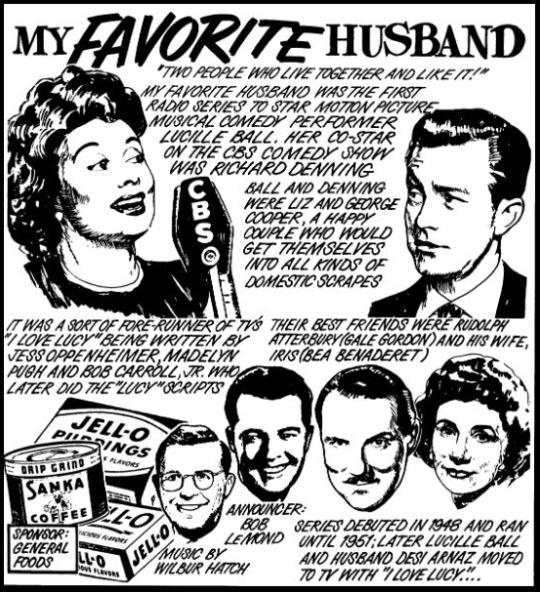
Lucille Ball (Liz Cooper) was born on August 6, 1911 in Jamestown, New York. She began her screen career in 1933 and was known in Hollywood as ‘Queen of the B’s’ due to her many appearances in ‘B’ movies. With Richard Denning, she starred in a radio program titled “My Favorite Husband” which eventually led to the creation of “I Love Lucy,” a television situation comedy in which she co-starred with her real-life husband, Latin bandleader Desi Arnaz. The program was phenomenally successful, allowing the couple to purchase what was once RKO Studios, re-naming it Desilu. When the show ended in 1960 (in an hour-long format known as “The Lucy-Desi Comedy Hour”) so did Lucy and Desi’s marriage. In 1962, hoping to keep Desilu financially solvent, Lucy returned to the sitcom format with “The Lucy Show,” which lasted six seasons. She followed that with a similar sitcom “Here’s Lucy” co-starring with her real-life children, Lucie and Desi Jr., as well as Gale Gordon, who had joined the cast of “The Lucy Show” during season two. Before her death in 1989, Lucy made one more attempt at a sitcom with “Life With Lucy,” also with Gordon.
Richard Denning (George Cooper) was born Louis Albert Heindrich Denninger Jr., in Poughkeepsie, New York. When he was 18 months old, his family moved to Los Angeles. Plans called for him to take over his father's garment manufacturing business, but he developed an interest in acting. Denning enlisted in the US Navy during World War II. He is best known for his roles in various science fiction and horror films of the 1950s. Although he teamed with Lucille Ball on radio in “My Favorite Husband,” the two never acted together on screen. While “I Love Lucy” was on the air, he was seen on another CBS TV series, “Mr. & Mrs. North.” From 1968 to 1980 he played the Governor on “Hawaii 5-0″, his final role. He died in 1998 at age 84.
Bea Benadaret (Iris Atterbury) was considered the front-runner to be cast as Ethel Mertz but when “I Love Lucy” was ready to start production she was already playing a similar role on TV’s “The George Burns and Gracie Allen Show” so Vivian Vance was cast instead. On “I Love Lucy” she was cast as Lucy Ricarodo’s spinster neighbor, Miss Lewis, in “Lucy Plays Cupid” (ILL S1;E15) in early 1952. Later, she was a success in her own show, "Petticoat Junction” as Shady Rest Hotel proprietress Kate Bradley. She starred in the series until her death in 1968.
Gale Gordon (Rudolph aka Rudy Atterbury) had worked with Lucille Ball on “The Wonder Show” on radio in 1938. One of the front-runners to play Fred Mertz on “I Love Lucy,” he eventually played Alvin Littlefield, owner of the Tropicana, during two episodes in 1952. After playing a Judge in an episode of “The Lucy-Desi Comedy Hour” in 1958, he would re-team with Lucy for all of her subsequent series’: as Theodore J. Mooney in ”The Lucy Show”; as Harrison Otis Carter in “Here’s Lucy”; and as Curtis McGibbon on "Life with Lucy.” Gordon died in 1995 at the age of 89.
Ruth Perrott (Katie, the Maid) was also later seen on “I Love Lucy.” She first played Mrs. Pomerantz, a member of the surprise investigating committee for the Society Matrons League in “Pioneer Women” (ILL S1;E25), as one of the member of the Wednesday Afternoon Fine Arts League in “Lucy and Ethel Buy the Same Dress” (ILL S3;E3), and also played a nurse when “Lucy Goes to the Hospital” (ILL S2;E16). She died in 1996 at the age of 96.
Bob LeMond (Announcer) also served as the announcer for the pilot episode of “I Love Lucy”. When the long-lost pilot was finally discovered in 1990, a few moments of the opening narration were damaged and lost, so LeMond – fifty years later – recreated the narration for the CBS special and subsequent DVD release.
GUEST CAST

Hans Conried (Mr. Benjamin Wood) first co-starred with Lucille Ball in The Big Street (1942). He then appeared on “I Love Lucy” as used furniture man Dan Jenkins in “Redecorating” (ILL S2;E8) and later that same season as Percy Livermore in “Lucy Hires an English Tutor” (ILL S2;E13) – both in 1952. The following year he began an association with Disney by voicing Captain Hook in Peter Pan. On “The Lucy Show” he played Professor Gitterman in “Lucy’s Barbershop Quartet” (TLS S1;E19) and in “Lucy Plays Cleopatra” (TLS S2;E1). He was probably best known as Uncle Tonoose on “Make Room for Daddy” starring Danny Thomas, which was filmed on the Desilu lot. He joined Thomas on a season 6 episode of “Here’s Lucy” in 1973. He died in 1982 at age 64.
Although his first name is not mentioned here, it will be in future episodes.
THE EPISODE
ANNOUNCER: “Come with us to the quiet little town of Sheridan Falls and let’s look into the brown house at 321 Bundy Drive where the Coopers live. They’re entertaining George’s boss, Mr. Atterbury, and his wife. And the subject under discussion is the forthcoming annual bank outing.”
The episode opens with Liz and Iris discussing what to wear to the bank outing. George disapproves of Liz’s new play suit.
LIZ: “George thinks it’s too daring. He says there’s too much play and not enough suit.”
It is typical for George to disapprove of Liz’s revealing wardrobe choices, although the conversation generally revolves around swimwear. Iris wonders if she should wear her new blue slacks.
RUDY: “Why do they call them slacks? I’ve never seen any in them.”
George and Rudolph imitate the girls by feminizing their own wardrobe predicament, another comedic tact the boys have done before. George and Rudolph reveal that they have been named team captains. Iris says she’ll get a bottle of Absorbine Junior.

Absorbine Jr. is a fast absorbing, deep penetrating topical pain reliever. It provides relief from sore muscles and cramps as well as athlete’s foot. The Absorbine company was established in 1892 as a lineament for horses. A version for humans (Absorbine Jr.) was introduced in 1903 and is still sold today.
Rudolph and George tell their wives that they won’t be playing at all, because the teams are comprised of husbands and wives, and they have no confidence in them on the baseball diamond. The girls beg to be allowed to play, despite knowing nothing about the game.
RUDOLPH: “Forget it, DiMaggio.”
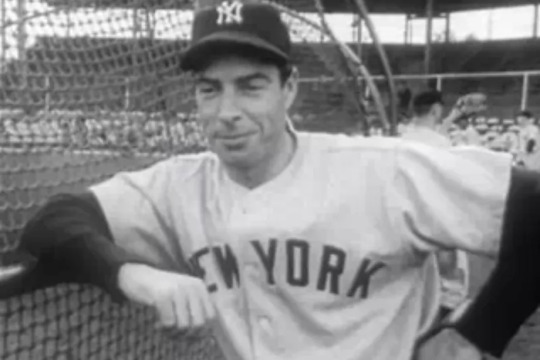
Joe DiMaggio (1914-99) was a professional baseball player who played his entire career for the New York Yankees. He was nicknamed “Joltin’ Joe” and “The Yankee Clipper” for his batting skill. The summer of 1949 was when DiMaggio shined the brightest. He batted .381 against the Red Sox that year, with six homers through 13 games.The Yanks would eventually win the World Series in 1949, the first of a record five straight.

Joe DiMaggio was mentioned on “I Love Lucy” in “Lucy is Enceinte” (ILL S2;E10), Fred gives Lucy a signed baseball for his future ‘godson’. When he asks Lucy to read out the signature, she at first says “Spalding,” the ball’s brand name, but then finds it is signed by Joe DiMaggio. In “Ragtime Band” (ILL S6;E21), Little Ricky asks Fred, “Who’s Joe 'Maggio?”
George rhapsodizes about his college baseball career, telling a story they’ve all heard before.
GEORGE: “There’s a certain group of spectators who will never forget the afternoon of August 25, 1933.”
This date was actually Lucille Ball’s 22nd birthday. 1933 was Ball’s first year in Hollywood, and the year her first four films were released.
After George does a dramatic play-by-play of his big college game victory, Liz says:
LIZ: “Thank you, Ted Husing.”
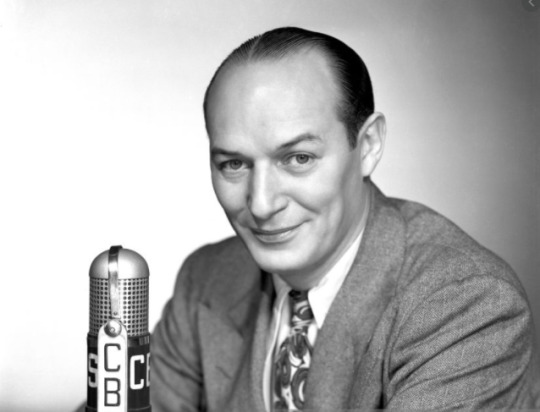
Edward ‘Ted’ Husing (1901-62) was among the first to lay the groundwork of sports reporting on television and radio. In 1946, Husing left CBS sports to pursue a career as a disk jockey and was succeeded by Red Barber. “The Ted Husing Bandstand” ran from 1946 to 1954.
The scene ends with the wives begging to play, and the boys uniformly shouting “no”! That night in bed, Liz wakens in tears about being left out of the baseball game, feeling she is being left out.
Next day, Liz tells Katie the Maid she’s decided to learn how to play baseball. Iris drops by with books about how to play baseball. Katie reads out the rules. The doorbell rings. It is the Cooper’s neighbor, Mr. Wood (Hans Conried), who is lonesome, despite having eleven children. He volunteers to teach the girls baseball. After all, he saw a World Series game once. He mentions Babe Ruth.

George Herman "Babe" Ruth Jr. (1895-1948) was a professional baseball player whose career spanned 22 seasons, from 1914 through 1935. Nicknamed "The Bambino" and "The Sultan of Swat", he began his career as a pitcher for the Boston Red Sox, but achieved his greatest fame playing with the New York Yankees.

Ruth was mentioned on a 1963 episode of “The Lucy Show” when Lucy and Viv’s sons join Little League. [Desi Arnaz Jr. played billy Simmons in the show, and Ball posed for this publicity still with her son.]

It is here that the episode starts to vaguely resemble “The Golf Game” (ILL S3;E30) in 1954. In it, Lucy and Ethel decide they want to play golf with their husbands, despite the boys saying they known nothing about the game. In fact, they don’t, so they fall for whatever ridiculous rules the boys make-up. Coincidentally, this sport-themed episode was filmed on Hans Conried’s 37th birthday. The Little League-themed “Lucy Show” mentioned above was first aired on Conried’s 45th birthday!
Using the living room as their baseball diamond and sofa cushions as bases, Mr. Wood attempts to teach the girls the finer points of baseball.
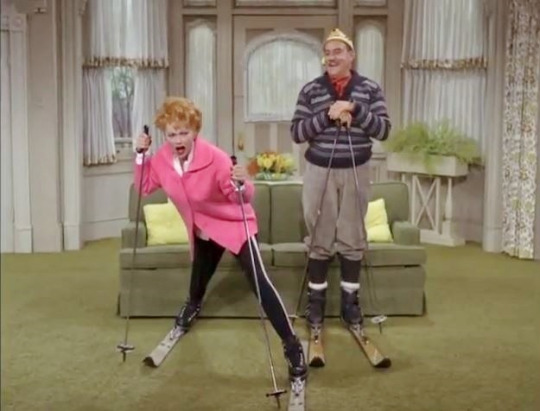
In “Lucy and the Winter Sports” (TLS S3;E3) in 1964, Mr. Mooney attempts to teach Mrs. Carmichael how to ski without ever leaving the living room. Needless to say, the results are equally disastrous.
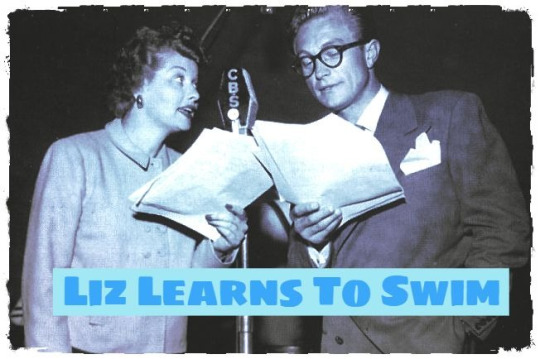
This is not the last time Mr. Wood (played by Hans Conried) will teach Liz an outdoor sport in her own living room. In June 1950 Conried returns to the series to play Mr. Wood, who teaches Liz to swim - without ever getting wet!
Mr. Wood’s frantic lesson turns into a loosely familiar version of the famous “Who’s On First” comedy routine perfected by Bud Abbott and Lou Costello.
LIZ: “Who’s on third?” MR. WOOD: “Abbott and Costello!”

Although the routine had been around in different forms since vaudeville, Abbott and Costello first put their baseball spin on the routine in 1938. In 1999, Time Magazine named the routine Best Comedy Sketch of the 20th Century. In 1945, Lucille Ball played herself in their movie Abbott and Costello in Hollywood.
Mr. Wood gives up on his coaching, but Liz reveals that she’s already signed them up for the game!

A bank outing will also be the subject of “Lucy and Clint Walker” (TLS S2;E24) in 1966. Lucy and Clint win the balloon race, but baseball is not on the agenda. The day of the Bank Outing, Liz and Iris are enjoying hot dogs. Iris orders a second hot dog with pickle, mustard, chili sauce, ketchup, lettuce, butter, salt, pepper, and a dash of horseradish!
RUDY: “Iris, at least give the hot dog a fighting chance.”

Iris’s voracious appetite is a character trait that was later ascribed to Ethel Mertz. Baseball and hot dogs are classic Americana. The two were combined when Lucy Ricardo pretends to be a hot dog vendor to get a message to Bob Hope at Yankee Stadium in the “I Love Lucy” season six opener.
George has worn his old college baseball uniform. Mr. Wood is acting as umpire. George’s strategy is to keep Liz on the bench till the team gets in a tight spot.
RUDY: “Iris is up first. Has anyone seen the old bat? Oh, there it is on the ground.”
Miraculously, Iris hits a ball out of the park! Shocked, she doesn’t run the bases.
Later, the score is ten to nothing with the Cooper side down but when the score quickly ties and Liz is still on the bench. At batting practice, George accidentally hits himself in the head with a bat! George passes out and Liz is up at bat! Liz starts out facing the catcher! With two strikes, Liz hits the ball!
Later, George revives and Liz tells him that they won by one run - made by her! Rudy reveals that they won by default when Liz got hit by the ball, forcing the runner at third to walk home and win the game!
MORE BALL AT BAT!

In addition to the episodes cited above, Lucille Ball also suited up in 1963′s “Lucy and Viv Play Softball” (TLS S2;E3).
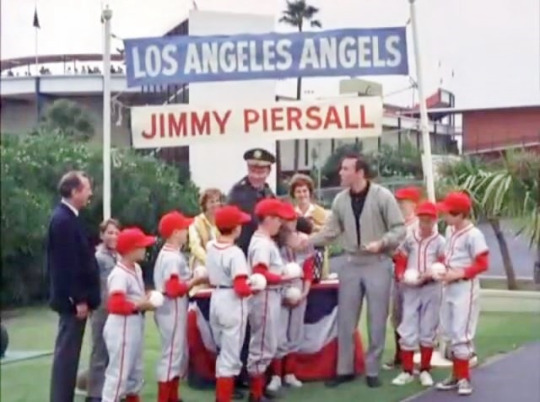
Lucy Carmichael’s son got to meet Jimmy Pearsall of the Los Angeles Angels in the very first episode of “The Lucy Show” to take place in California.

In real life, Lucille Ball batted for Wildcat on the Broadway Show League in 1961. Julie Andrews of Camelot was catcher, and Joe E. Brown was umpire!

The year before this episode of “My Favorite Husband” aired (1948), the great Babe Ruth signed a game-used baseball that was then also signed by Lucille Ball and Rod Carew.

Batting practice for Kathleen (Lucille Ball) in The Dark Corner (1946).

Putting her Best Foot Forward for a pitch in 1943.

Like mother, like daughter! In 2011, the New York Yankees invited Lucie Arnaz to throw out the first pitch to mark Latin Heritage Month.
#My Favorite Husband#Lucille Ball#Baseball#Picnic#Richard Denning#Bea Benadaret#Gale Gordon#Ruth Perrott#Bob LeMond#I Love Lucy#The Lucy Show#Lucie Arnaz#Best Foot Forward#The Dark Corner#Babe Ruth#Joe DiMaggio#Bob Hope#Clint Walker#Abbott and Costello#Desi arnaz#Desi Arnaz Jr.#Ted Husing#Hans Conried#Absorbine Junior#Softball
5 notes
·
View notes
Text
BE A PAL aka BE A PAL TO YOUR HUSBAND
June 18, 1950

“Be A Pal” aka “Be A Pal To Your Husband” is episode #93 of the radio series MY FAVORITE HUSBAND broadcast on June 18, 1950 on the CBS Radio Network.
Synopsis ~ Liz feels thinks George would rather not spend time with her anymore, so she tries everything she can think of to be a pal to her husband.
REGULAR CAST

Lucille Ball (Liz Cooper) was born on August 6, 1911 in Jamestown, New York. She began her screen career in 1933 and was known in Hollywood as ‘Queen of the B’s’ due to her many appearances in ‘B’ movies. With Richard Denning, she starred in a radio program titled “My Favorite Husband” which eventually led to the creation of “I Love Lucy,” a television situation comedy in which she co-starred with her real-life husband, Latin bandleader Desi Arnaz. The program was phenomenally successful, allowing the couple to purchase what was once RKO Studios, re-naming it Desilu. When the show ended in 1960 (in an hour-long format known as “The Lucy-Desi Comedy Hour”) so did Lucy and Desi’s marriage. In 1962, hoping to keep Desilu financially solvent, Lucy returned to the sitcom format with “The Lucy Show,” which lasted six seasons. She followed that with a similar sitcom “Here’s Lucy” co-starring with her real-life children, Lucie and Desi Jr., as well as Gale Gordon, who had joined the cast of “The Lucy Show” during season two. Before her death in 1989, Lucy made one more attempt at a sitcom with “Life With Lucy,” also with Gordon.
Richard Denning (George Cooper) was born as Louis Albert Heindrich Denninger Jr., in Poughkeepsie, New York. When he was 18 months old, his family moved to Los Angeles. Plans called for him to take over his father’s garment manufacturing business, but he developed an interest in acting. Denning enlisted in the US Navy during World War II. He is best known for his roles in various science fiction and horror films of the 1950s. Although he teamed with Lucille Ball on radio in “My Favorite Husband,” the two never acted together on screen. While “I Love Lucy” was on the air, he was seen on another CBS TV series, “Mr. & Mrs. North.” From 1968 to 1980 he played the Governor on “Hawaii 5-0″, his final role. He died in 1998 at age 84.
Gale Gordon (Rudolph Atterbury) had worked with Lucille Ball on “The Wonder Show” on radio in 1938. One of the front-runners to play Fred Mertz on “I Love Lucy,” he eventually played Alvin Littlefield, owner of the Tropicana, during two episodes in 1952. After playing a Judge in an episode of “The Lucy-Desi Comedy Hour” in 1958, he would re-team with Lucy for all of her subsequent series’: as Theodore J. Mooney in ”The Lucy Show”; as Harrison Otis Carter in “Here’s Lucy”; and as Curtis McGibbon on "Life with Lucy.” Gordon died in 1995 at the age of 89.
Bea Benadaret (Iris Atterbury) was considered the front-runner to be cast as Ethel Mertz but when “I Love Lucy” was ready to start production she was already playing a similar role on TV’s “The George Burns and Gracie Allen Show” so Vivian Vance was cast instead. On “I Love Lucy” she was cast as Lucy Ricarodo’s spinster neighbor, Miss Lewis, in “Lucy Plays Cupid” (ILL S1;E15) in early 1952. Later, she was a success in her own show, “Petticoat Junction” as Shady Rest Hotel proprietress Kate Bradley. She starred in the series until her death in 1968.
Ruth Perrott (Katie, the Maid) was also later seen on “I Love Lucy.” She first played Mrs. Pomerantz (above right), a member of the surprise investigating committee for the Society Matrons League in “Pioneer Women” (ILL S1;E25), as one of the member of the Wednesday Afternoon Fine Arts League in “Lucy and Ethel Buy the Same Dress” (ILL S3;E3), and also played a nurse when “Lucy Goes to the Hospital” (ILL S2;E16). She died in 1996 at the age of 96.
Bob LeMond (Announcer) also served as the announcer for the pilot episode of “I Love Lucy”. When the long-lost pilot was finally discovered in 1990, a few moments of the opening narration were damaged and lost, so LeMond – fifty years later – recreated the narration for the CBS special and subsequent DVD release.
GUEST CAST

Hans Conried (Professor Millmoss / Joe) first co-starred with Lucille Ball in The Big Street (1942). He then appeared on “I Love Lucy” as used furniture man Dan Jenkins in “Redecorating” (ILL S2;E8) and later that same season as Percy Livermore in “Lucy Hires an English Tutor” (ILL S2;E13) – both in 1952. The following year he began an association with Disney by voicing Captain Hook in Peter Pan. On “The Lucy Show” he played Professor Gitterman in “Lucy’s Barbershop Quartet” (TLS S1;E19) and in “Lucy Plays Cleopatra” (TLS S2;E1). He was probably best known as Uncle Tonoose on “Make Room for Daddy” starring Danny Thomas, which was filmed on the Desilu lot. He joined Thomas on a season 6 episode of “Here’s Lucy” in 1973. He died in 1982 at age 64.

“My Favorite Husband” was based on the novels Mr. and Mrs. Cugat, the Record of a Happy Marriage (1940) and Outside Eden (1945) by Isabel Scott Rorick, which had previously been adapted into the film Are Husbands Necessary? (1942). “My Favorite Husband” was first broadcast as a one-time special on July 5, 1948. Lucille Ball and Lee Bowman played the characters of Liz and George Cugat, and a positive response to this broadcast convinced CBS to launch “My Favorite Husband” as a series. Bowman was not available Richard Denning was cast as George. On January 7, 1949, confusion with bandleader Xavier Cugat prompted a name change to Cooper. On this same episode Jell-O became its sponsor. A total of 124 episodes of the program aired from July 23, 1948 through March 31, 1951. After about ten episodes had been written, writers Fox and Davenport departed and three new writers took over – Bob Carroll, Jr., Madelyn Pugh, and head writer/producer Jess Oppenheimer. In March 1949 Gale Gordon took over the existing role of George’s boss, Rudolph Atterbury, and Bea Benaderet was added as his wife, Iris. CBS brought “My Favorite Husband” to television in 1953, starring Joan Caulfield and Barry Nelson as Liz and George Coope. The television version ran two-and-a-half seasons, from September 1953 through December 1955, running concurrently with “I Love Lucy.” It was produced live at CBS Television City for most of its run, until switching to film for a truncated third season filmed (ironically) at Desilu and recasting Liz Cooper with Vanessa Brown.
This script is a revision of "Be Your Husband's Best Friend" episode #21 of “My Favorite Husband” aired December 8, 1948. The program was aired before Liz and George’s last name was changed from Cugat to Cooper. Hans Conried was in that episode as well.
This program was the basis for “I Love Lucy” episode “The Camping Trip” (ILL S2;E29) and parts of the identically titled "Be a Pal" (ILL S1;E2).

“Jell-O Everybody!”
The episode opens with Liz and George having an argument over breakfast about where to spend their evening. Liz wants to go to a symphony concert, while George wants to play poker.
At their club luncheon, Liz and Iris listen to a guest speaker talk about “How To Be Happy, Though Married”. Professor Phillip Millmoss (Hans Conried) suggests the ladies be a pal to their husbands. Liz wonders why it has to be the woman who gives in - but Millmoss tells her to consult his new book (page 65):
PROFESSOR MILLMOSS (reading): “Be your husband’s best friend. Be like his dog. You’ll never hear a man arguing with his dog!”

On “I Love Lucy,” the book Lucy Ricardo takes advice from was written by Dr. Humphries. Unlike the radio version, the author is not a character in the script. When taking his advice doesn’t work out the way she hoped, Lucy quips “Doctor Humphries can go jumphries.”
Liz resolves to employ the “Millmoss Treatment” with George and sits beside him to read the evening newspaper. Liz pretends to be interested in the sports section.

LIZ (reading headline): “Williams Bags Crown By TKO in eighth.″
Liz pronounces TKO phonetically as ‘Tuh-Ko” although George corrects her. The exchange was repeated verbatim between Lucy and Ricky in “The Camping Trip.”
LIZ (reading): “Midget Racing! They oughta be ashamed making those little men racing around the track.”
George sarcastically calls Liz Ted Husing, and then Red Barbar.

Ted Husing (1901-62) was one of CBS Radio’s most popular sportscasters. By 1950 his salary was an astronomical million dollars! Red Barber (1908-92) was a play-by-play announcer for major league baseball, then announcing for the Brooklyn Dodgers and holding down his own CBS TV sports show “Red Barber’s Club House.”
LIZ (reads): “Now they’re racing little girls! It says so right here,‘Yesterday at Tanforan a race was won by a three year-old maiden!’ She certainly was carrying a lot of money for a little girl. She had $2,000 in her purse.”

The line is virtually identical on television, except that Tanforan (a horse racetrack outside San Francisco) was changed to the more familiar Churchill Downs.
George / Ricky then refers to Liz / Lucy as Grantland Rice (1880–1954), a sportswriter known for his elegant prose, although the reference was removed for TV syndication when Rice died in 1954. It was restored for the DVD release. Clueless Liz / Lucy think he is a food!
Liz is determined to join in the poker game that evening, despite not knowing anything about the card game. Lucy also tried this tactic on “Be A Pal”.
LIZ / LUCY (looking over her cards): “There’s her sister! What do you have?”
MR. ATTERBURY / FRED: “I shouldn’t talk, but tell your two Andrews Sisters not to wait up for LaVerne!”

Interestingly, the poker players consist of Joe (also voiced by Hans Conried), George, and Mr. Atterbury played by Gale Gordon. Gordon was on the short-list to play Fred Mertz on “I Love Lucy,” so it is fitting that these lines were given to William Frawley in the TV version. The Andrews Sisters were a close-harmony singing group most popular during World War II. In 1969 Lucy played LaVerne Andrews on an episode of “Here’s Lucy” that guest-starred Patty Andrews as herself. Lucille Ball’s daughter, Lucie Arnaz (not yet born at the time of the radio show) took the role of the third Andrews sister, Maxene.
Mr. Atterbury suggests that George take Liz on a rigorous camping trip to dissuade her from being George’s ‘pal’. Iris warns Liz about her husband’s plan, just as Ethel does in “The Camping Trip.” Liz / Lucy recruits Iris / Ethel to turn the tables at the campsite.
Liz and George engage in a fishing contest, just like Lucy and Ricky. Iris / Ethel arrives with some store-bought trout to fool George / Ricky.

LIZ: “Throw them to me, Iris. That way I can tell George I caught them.”
On radio, George becomes suspicious. It seems Iris has purchased LAKE trout, not the kind found in a stream. On TV this is goof is omitted.
Liz / Lucy challenges George / Ricky to a footrace back to camp.
GEORGE / RICKY: “Since I’m a man, I’ll give you a head start.” LIZ / LUCY: “Since I’m a woman, I’ll take it!”
Back at camp, Liz is patiently waiting for George, having hitched a ride back in Iris’s car.

LIZ / LUCY: “I got back so early, I had time to wash my hair.”
Next morning Liz and Iris conspire to make George think she’s an expert duck hunter and sharp-shooter! The same scenario is repeated in “The Camping Trip” with some minor line changes. Liz takes aim at the tree, and on cue Iris tosses a duck at her feet.
GEORGE: “I don’t get it. Liz. First you catch a Lake Trout in a stream, now you shoot a duck marked Birdseye Frozen Foods!”
Lucille Ball (as Liz) then does her classic spider face “Ewww!” On television, the duck Ethel has bought is not the frozen variety, but one freshly plucked!

RICKY: “You know, that’s pretty good shooting. Not only did you kill the duck, but you knocked its feathers off and cleaned it, too!”
It is likely that CBS did not want to give an unpaid promotional mention to the Birdseye Company, although the thawed bird resembles the classic rubber chicken that is so associated with vaudeville comedy.
The main difference in this scene on radio and television is that Liz demonstrates her shooting skill with the horseshoe AFTER the duck hunting, but before it on television. When Iris is exposed, Liz and George decide to stop being pals and go back to being just husband and wife.
BOB LEMOND: “Watch for Lucille Ball in ‘Fancy Pants’ with Bob Hope.”

Fancy Pants was a musical adaptation of Ruggles of Red Gap that premiered on July 19, 1950. It was the second of four films Ball and Hope did together.
A short commercial for Sugar Crisp follows the mention of Ball’s film. A final rendition of the Jell-O pudding jingle ends the program.
#My Favorite Husband#Be A Pal#Lucille Ball#Richard Denning#I Love Lucy#desi arnaz#bea benadaret#Gale Gordon#William Frawley#Vivian Vance#fancy pants#1950#CBS Radio#CBS TV#Bob LeMond#Birdseye Company#Tanforan#Churchill Downs#Grantland Rice#Red Barber#Ted Husing#The Andrews Sisters#bob hope#Hans Conried#Ruth Perrott#The Camping Trip#Jello#Jell-o
0 notes